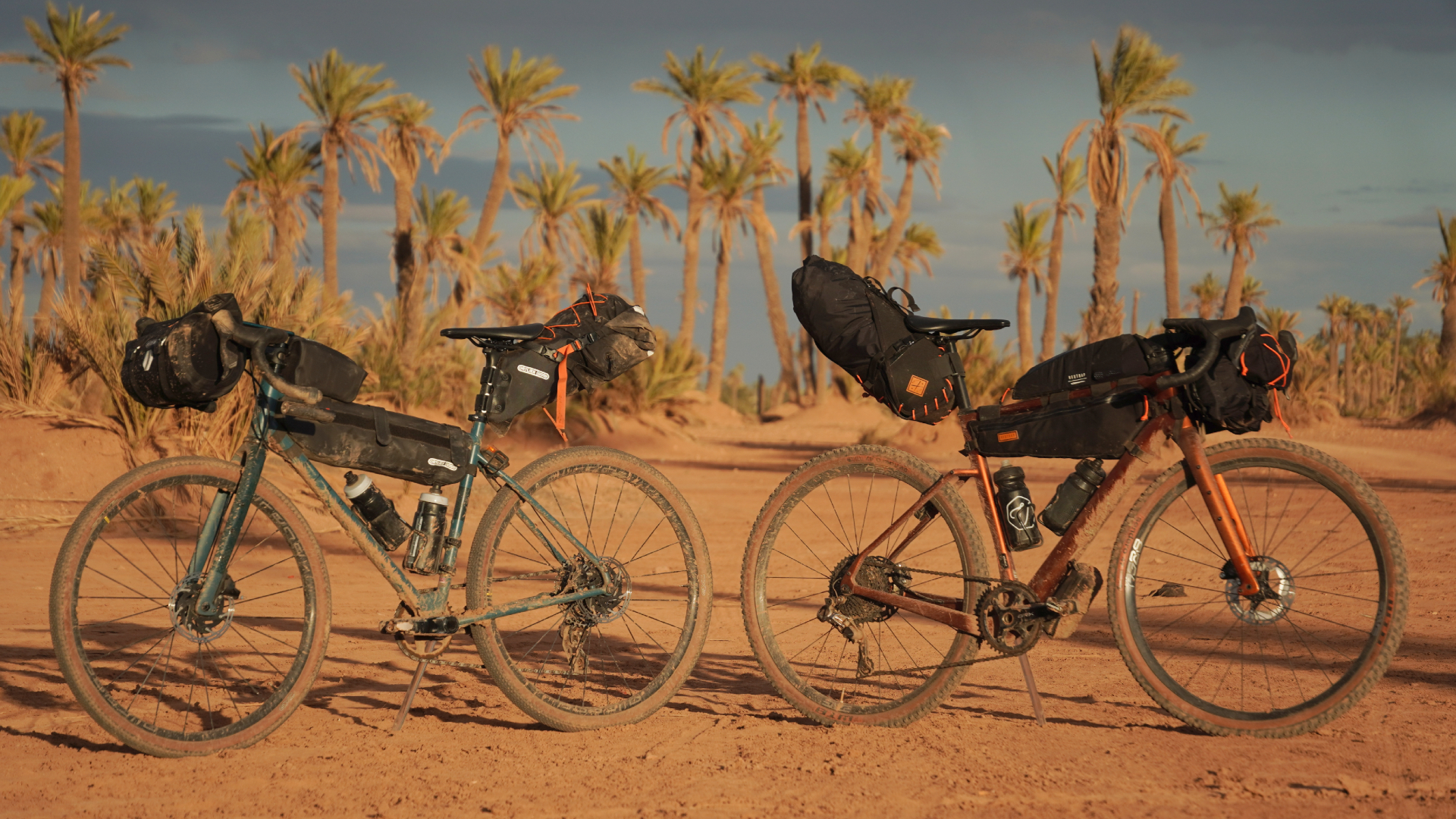
In some areas of cycling, the argument is pretty settled on which is the best frame material between carbon and steel. For top-end road performance, carbon is a pretty clear winner with its aerodynamic tube shapes and lighter overall frame weights. For long-term trekking and round-the-world rides, the durability and strength of steel is hard to argue with.
But what about gravel riding and, more specifically, the non-competitive adventuring side of that genre? Here second-saving optimizations aren’t as important as at the pointy end of road racing - longevity is also a proportionally greater concern. Then again, even if not racing, a lighter and more sprightly bike is simply just great fun to ride - nobody wants to lug around more weight than they need to!

There are a lot of nuances to consider. So, we’ve put two bikes to the test - one carbon, one steel - on a four-day bikepacking loop around the High Atlas Mountains of Morocco, as well as a clutch of other rides, and pulled together our verdicts on four key areas: weight, compliance, longevity, load-ability (for want of a better term).
We dig into the details on all of that just below, but if you’re interested in the bikepacking loop around the Atlas Mountains itself you can check that out over here. We also stopped by the start of the Atlas Mountain Race while we were out there and pulled together the most interesting rigs we spotted in a round up over here - so do check that out!
Now, let’s get down to the bikes…
Weight
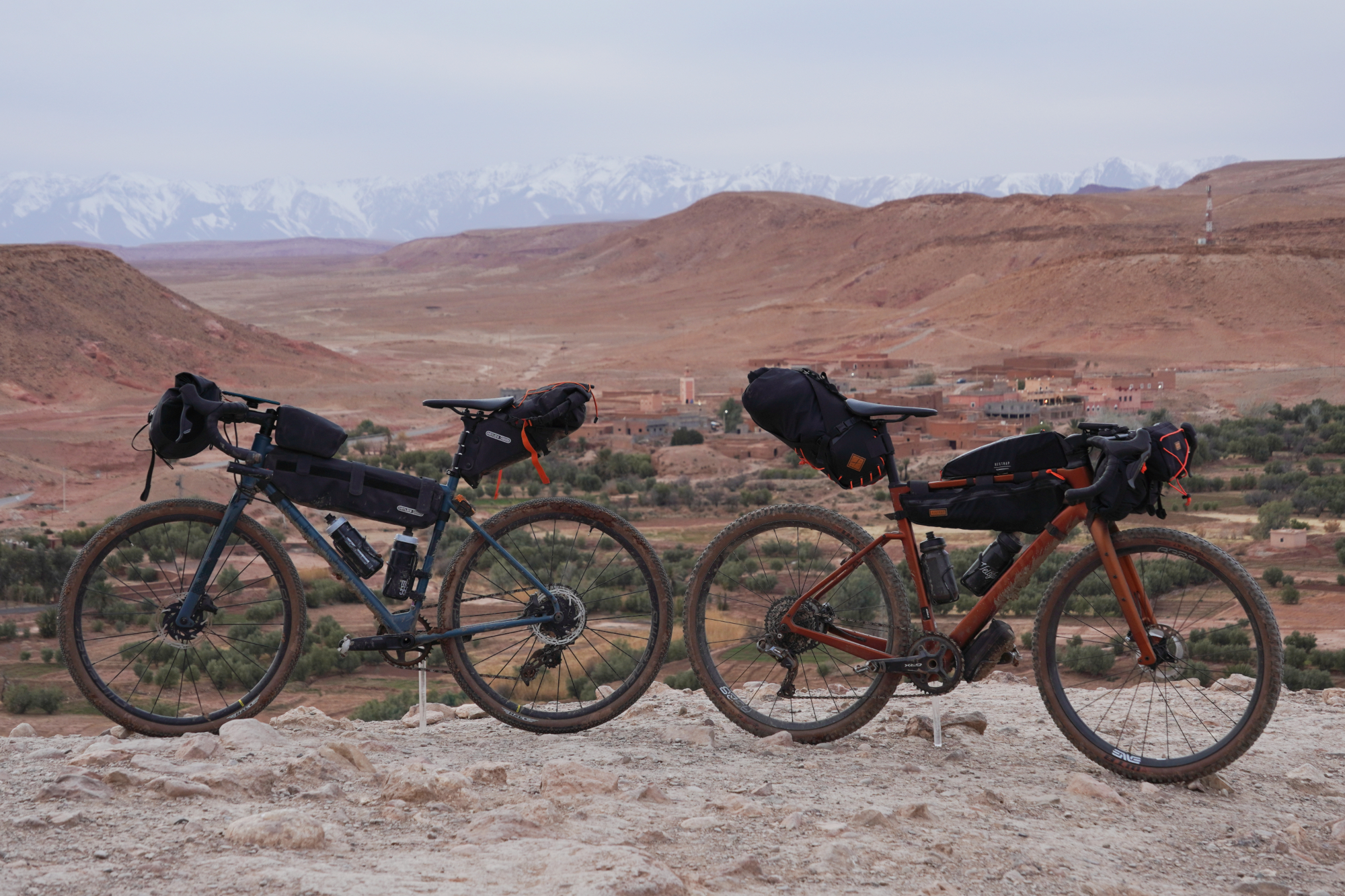
This is perhaps the most obvious difference between carbon and steel - and the one which you notice with your very first pedal stroke, as the acceleration does feel noticeably different.
The gravel bikes we had on test here came in at 8.93kg for the Ribble Gravel SL - Pro and 10.6kg for the Ribble Gravel 725 - Pro, but those did have quite different specs - the Ribble Gravel 725 - Pro being equipped with metal componentry pretty much throughout and the Ribble Gravel SL - Pro making much greater use of carbon.
But even for an identical spec, a steel frameset will generally come in at about a kilo heavier than the equivalent carbon frame.
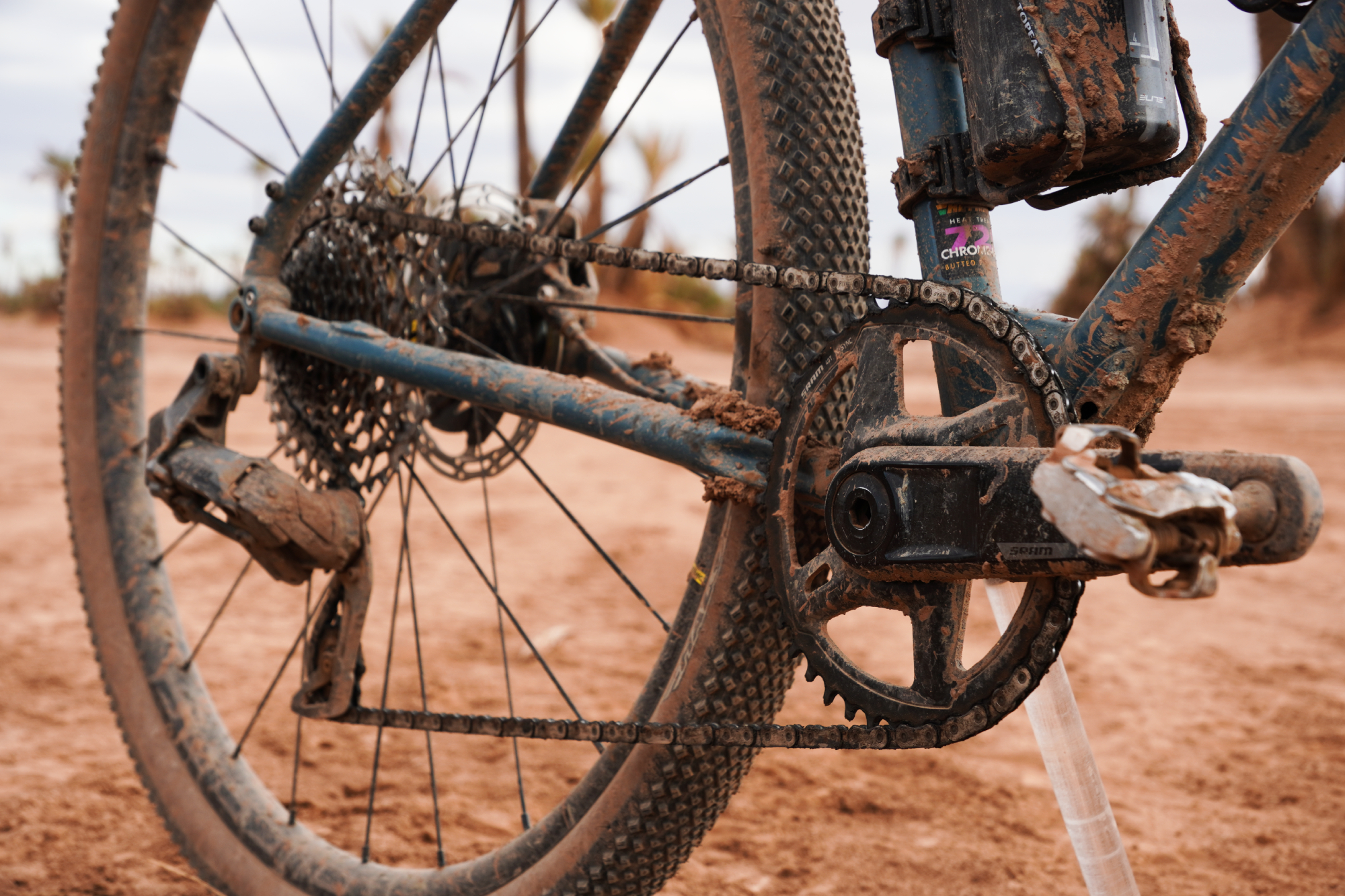
A kilo might not sound like much and, to be fair, in the context of the whole rider/bike system, it really isn’t that much. Your own body weight can fluctuate by that much throughout a day, and it’s less than the weight of a bottle of water and toolkit.
Essentially, the weight difference here is not going to make a significant difference to the distances and speed you’re able to cover. To put a number on it, using bikecalculator.com - a handy little tool which predicts your speed from a host of different perimeters - that calculator estimates the difference an extra kilo makes is about 0.03 kph, which is pretty negligible for non-competitive cycling.
The more relevant point is really your attitude to taking on extra weight. An extra kilo won’t make much difference, but if you decide you also want an extra change of clothes, a more expansive toolkit, a heavier duty stove - then you’ll begin to notice a more significant difference.
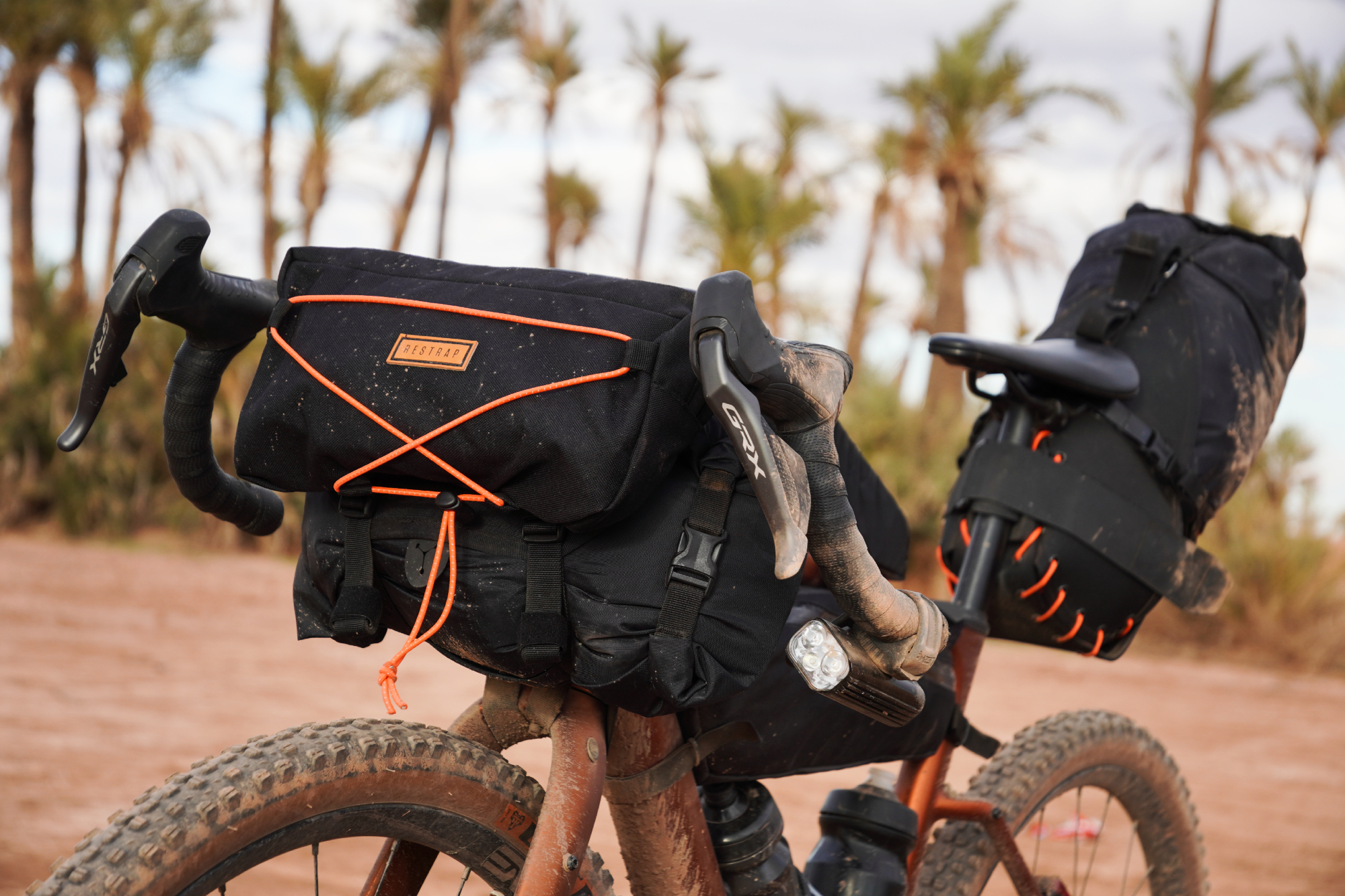
Being uncompromising on frame weight is a pretty good indicator that you’re going to be uncompromising elsewhere, but that’s not necessarily the case. You might prefer a steel frame for any of the reasons down below, but travel super lightweight in all other respect. Or, like me on the loop around the Atlas Mountains, you might use the weight saving from a carbon frame to pack a little heavier than you perhaps ‘should’.
In all, carbon wins on weight - but it’s not as obvious as it might at first appear.
Compliance
This is an especially interesting one. The ride feel of a steel frame is something much romanticised - and we’re guilty of it too!
But those differences were at their starkest when the majority of the cycling world was running 23mm wide tires at 110 psi, and when carbon frames were harsh, chattery and overbuilt - but much has changed since then.
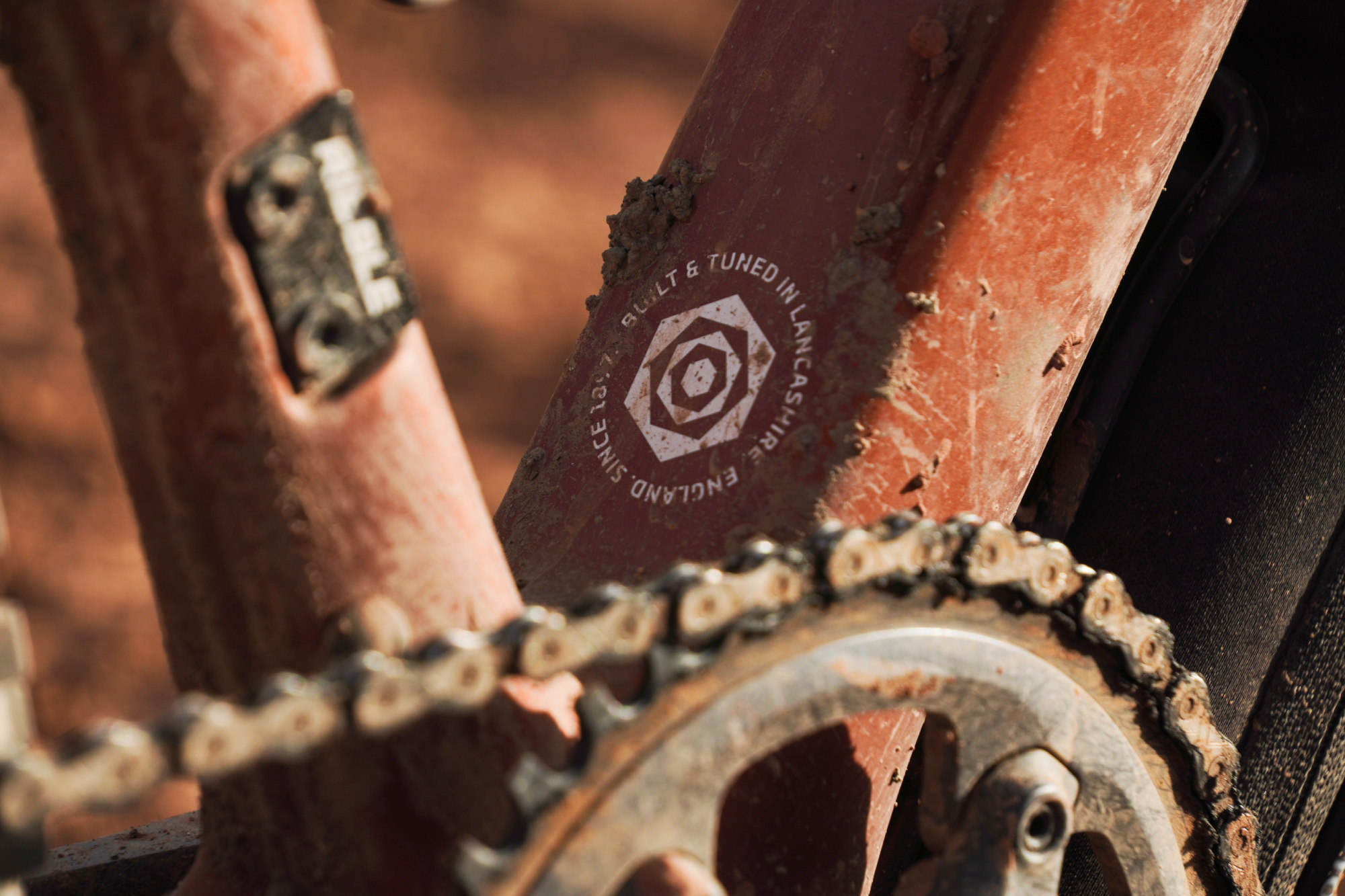
With more recent advances in the structure of carbon layups, carbon components can be engineered to be much more forgiving than steel. The Cervelo R5 WorldTour climbing bike, for instance, has a carbon seatpost which provides a comparable amount of flex to some suspension seatposts.
Equally, for gravel and all-road bikes which typically come with gravel bike tires around the 40mm mark, the difference between frame materials is much harder to detect. With the tire pressures being much lower than what they were, most of the chattery bumps and vibrations are sounded out by the tires.
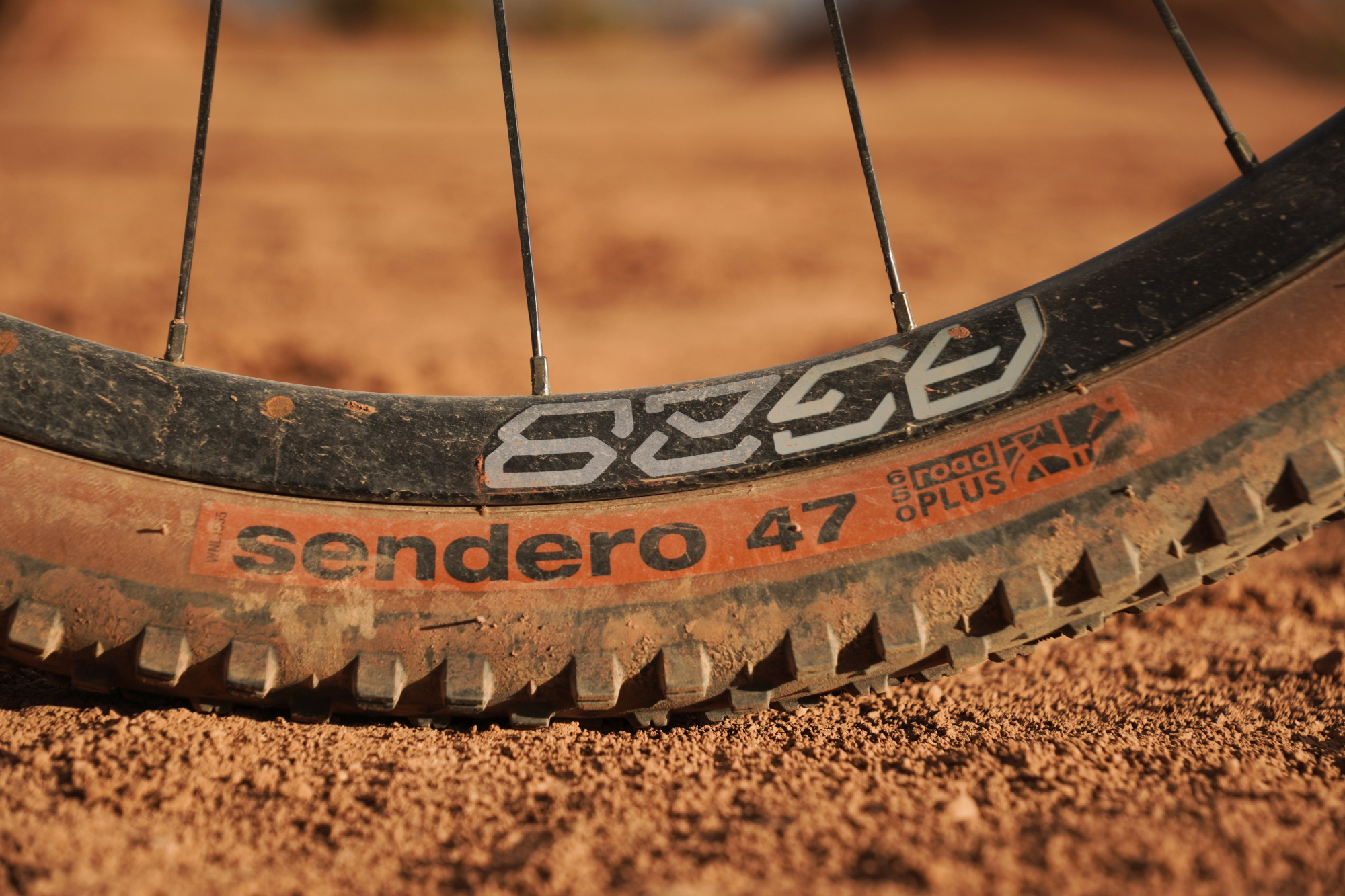
And, sure enough, when we switched between the two bikes after the bikepacking loop around the Atlas mountains, neither of us could tell the difference between the frame materials in their vibration dampening capacity.
If it’s extra comfort you’re after, a suspension stem, suspension seatpost, wider tires - and absolutely making sure you’ve not got your gravel bike tire pressures too high - would make a much more significant difference than the frame material. You’re better off making your decision based on the other factors listed here than compliance.
Durability
This is really where the best steel bikes comes into their own. We’ve come across carbon frames which have been written off by the straps of even the best bikepacking bags wearing through the tubing after a series of long rides in gritty conditions.
You can protect carbon frames through the application of ‘helicopter tape’, or any of the other protective films which are widely available. And that is also something worth doing for steel frames, as they rely on their coating of paint to prevent the steel from oxidising and rust from forming.
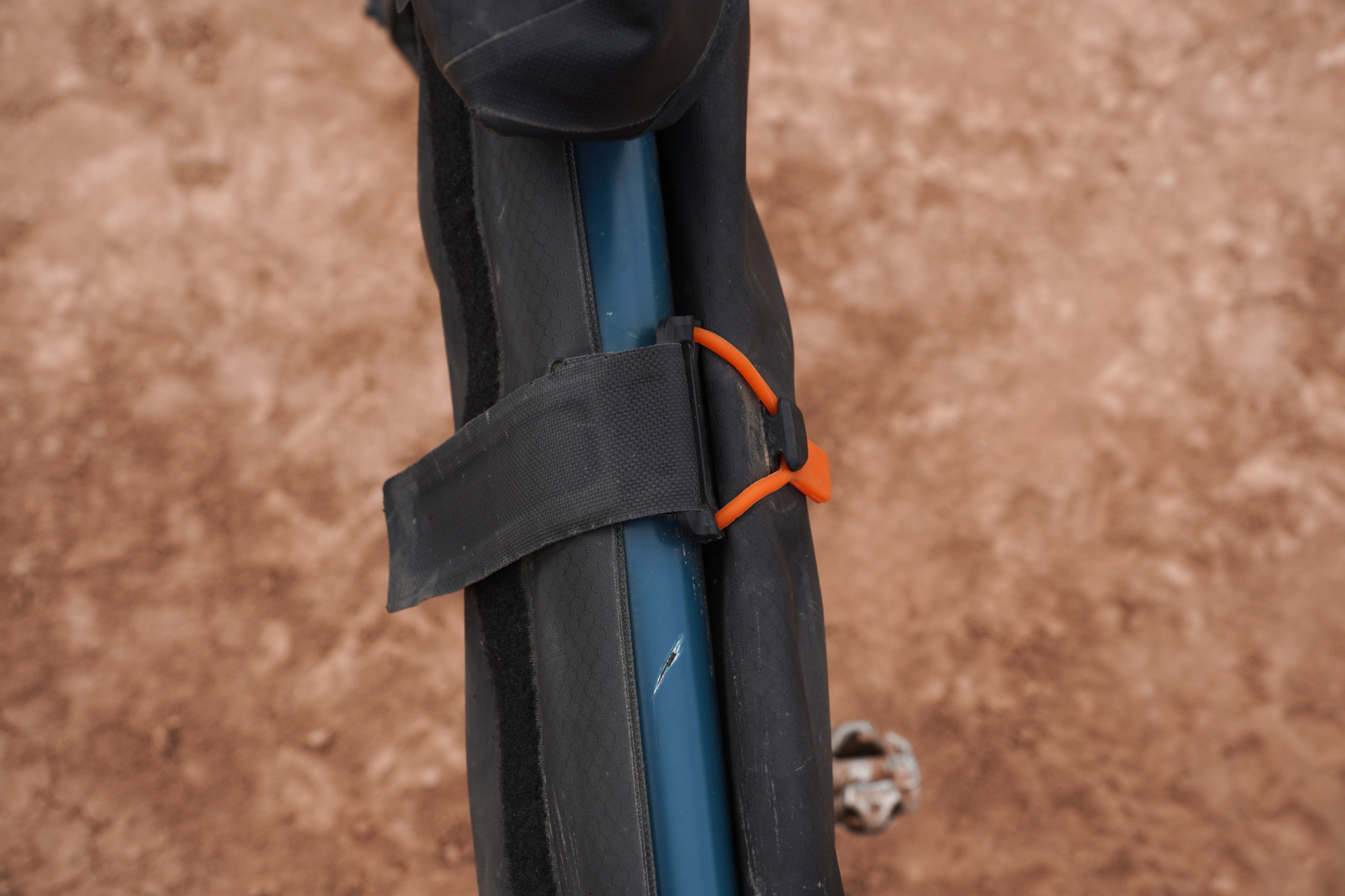
But should your tape fail (and it can), you’re going to be in a much better place with a steel frame than carbon, you won’t end up wearing through the tubing in the same way. Plus any issues with rust typically take quite a while to form, so you’ll likely have no problems up until the point you’re able to repaint it.
For me, though, the larger concern regards travelling with the bike. Although carbon can be made to be incredibly strong in certain directions, it’s generally much weaker and quite brittle in others. A well-packed and one of the best bike bags will do a lot to protect a carbon bike when taking it on flights - we’ve taken many carbon bikes abroad without an issue. But still, accidents can happen - not least when you’re exhausted at the end of a big trip.
Of course, steel frames can also be damaged. But in being a more ductile material, it’s much less brittle. Steel is also similarly strong in every direction - a knock to the side of the toptube might leave a dent, but it’s unlikely to break it.
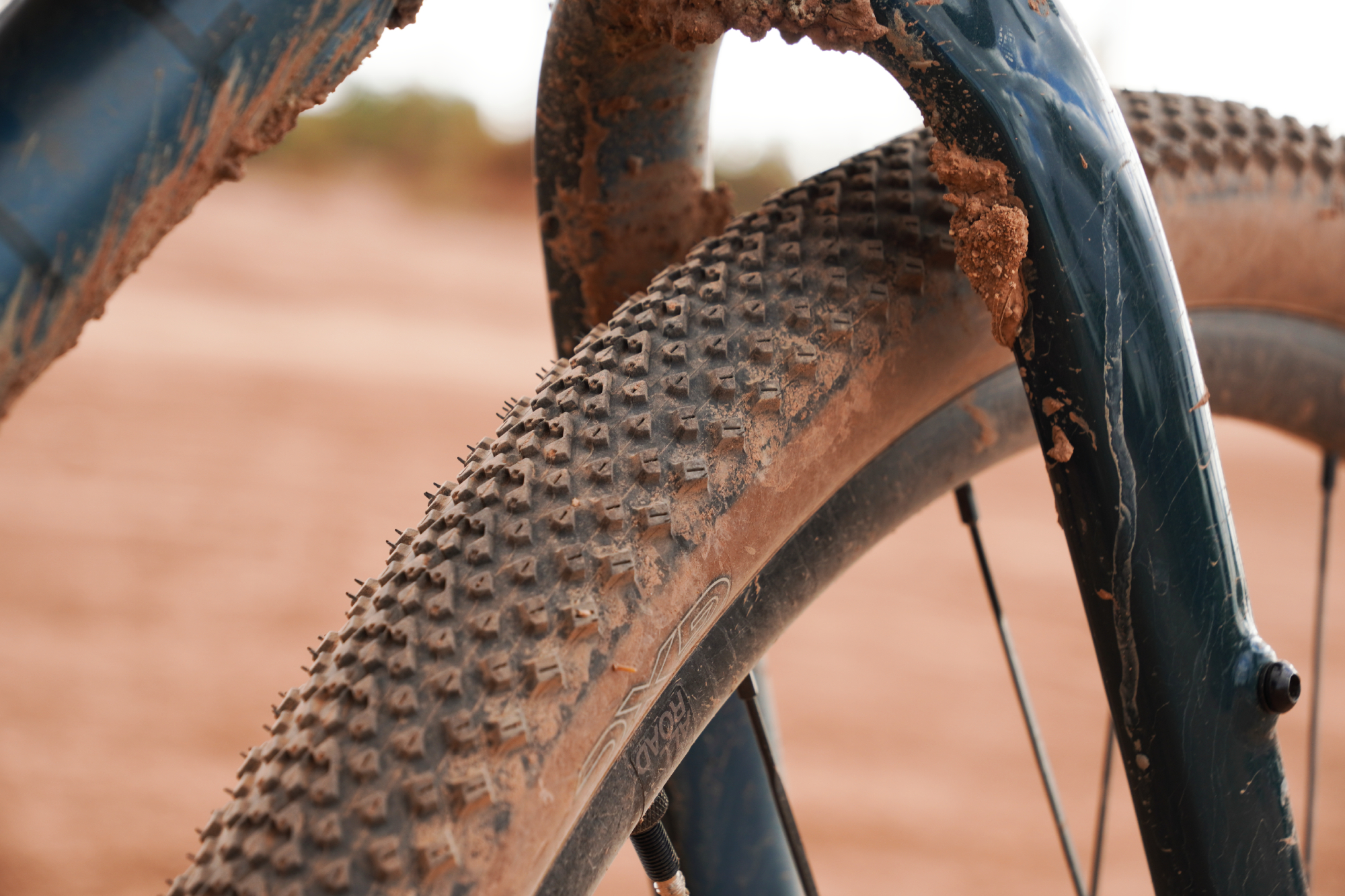
There is a bit of a caveat in that many steel framed gravel bikes do make use of a carbon fork, which have the very same drawbacks as carbon frames. But, in the case of the Ribble Gravel 725 - Pro (and with many other gravel bikes), the diameter of the head tube is at least quite standard. 1 1/8 - 1 1/2" tapered steerer forks are pretty common and getting a replacement that fits shouldn’t be too hard in many places in the world.
Trying to source a replacement frame which is going to work for you would be a lot more difficult and a lot more expensive. But if you’re really concerned, there are bikes such as the Surly Straggler which are equipped with steel forks as stock.
Load-ability
The considerations here are quite similar to the durability, but as it concerns actual loads rather than knocks and scrapes, there’s enough difference to warrant its own section.
For overnighter up to two week trips, carbon is more than strong enough to cope with the amount of kit you’re likely to bring. But if you’re going for longer than that - or if your bike will be doubling up as a trusty commuter in-between times - you’re going to want to consider the maximum load the bike is rated to take and whether that will actually be sufficient for you.

Steel frames, as you might expect, typically have a higher load rating than carbon - although it is worth noting that not all steel bikes are created equal. Steel bikes marketed as gravel and all-road will use thinner gauge and lighter weight steel tubes than what’s used on bikes designed specifically for touring. As such, almost all steel gravel bikes have a lower load rating.
If you are planning on carrying significantly heavy loads (around 30kg), it is worth considering one of the best touring bikes as an alternative. Similarly, if you are likely to be maxing out the maximum rated load for either a lighter steel bike or a carbon bike on a regular basis, that you’d probably be better off going for a more highly rated bike and keeping further within its limits, just as a precaution. The odd one-off is one thing, but doing that day in and day out is quite another.
Conclusion
So, which is best out of carbon and steel? Well, we’ve now put comfort to one side, the difference really comes down to whether your primary concern is the lightest possible setup and if damage in transit isn’t a large concern of yours - if you’re only travelling abroad once a year, you’d have to be really unfortunate to have an issue.
On the other hand, if you’re less fussed about weight and are planning on carrying heavier loads on a more regular basis - and if you do travel often and want something that can take a few knocks in its stride, steel will likely be the best option for you.







